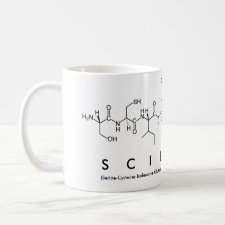
Authors: O'Mahony J, Nolan K, Smyth MR, Mizaikoff B
Article Title: Molecularly imprinted polymers - potential and challenges in analytical chemistry.
Publication date: 2005
Journal: Analytica Chimica Acta
Volume: 534
Issue: (1)
Page numbers: 31-39.
DOI: 10.1016/j.aca.2004.07.043
Alternative URL: http://www.sciencedirect.com/science/article/B6TF4-4DFK8GN-1/2/df705989bd8de56ef6bb017667a512a4
Abstract: Among the variety of biomimetic recognition schemes utilizing supramolecular approaches molecularly imprinted polymers (MIPs) have proven their potential as synthetic receptors in numerous applications ranging from liquid chromatography to assays and sensor technology. Their inherent advantages compared to biochemical/biological recognition systems include robustness, storage endurance and lower costs. However, until recently only few contributions throughout the relevant literature describe quantitative analytical applications of MIPs for practically relevant analyte molecules and real-world samples. Increased motivation to thoroughly evaluate the true potential of MIP technology is clearly attributed to the demands of modern analytical chemistry, which include enhanced sensitivity, selectivity and applicability of molecular recognition building blocks at decreasing costs. In particular, the areas of environmental monitoring, food and beverage analysis and industrial process surveillance require analytical tools capable of discriminating chemicals with high molecular specificity considering increasing numbers of complex environmental contaminants, pollution of raw products and rigorous quality control requested by legislation and consumer protection. Furthermore, efficient product improvement and development of new products requires precise qualitative and quantitative analytical methods. Finally, environmental, food and process safety control issues favor the application of on-line in situ analytical methods with high molecular selectivity. While biorecognition schemes frequently suffer from degrading bioactivity and long-term stability when applied in real-world sample environments, MIPs serving as synthetic antibodies have successfully been applied as stationary phase separation matrix (e.g. HPLC and SPE), recognition component in bioassays (e.g. ELISA) or biomimetic recognition layer in chemical sensor systems. Examples such as MIP-based selective analysis of flavones/flavonoids in wine, the determination of mycotoxins in beverages and analysis of organic contaminants in environment samples will elucidate the perspectives of this technology and will be contrasted with the challenges of rational MIP design providing control on binding site density, receptor capacity and selectivity
Template and target information: Review - MIPs
Author keywords: polymers, Flavones, molecularly imprinted polymer



Join the Society for Molecular Imprinting

New items RSS feed
Sign-up for e-mail updates:
Choose between receiving an occasional newsletter or more frequent e-mail alerts.
Click here to go to the sign-up page.
Is your name elemental or peptidic? Enter your name and find out by clicking either of the buttons below!
Other products you may like:
 MIPdatabase
MIPdatabase









